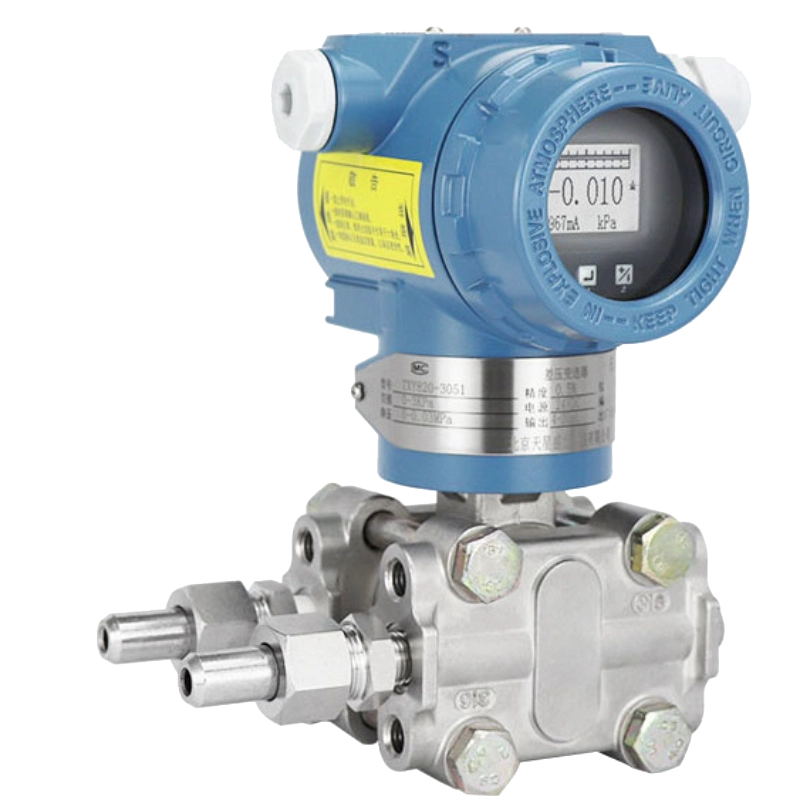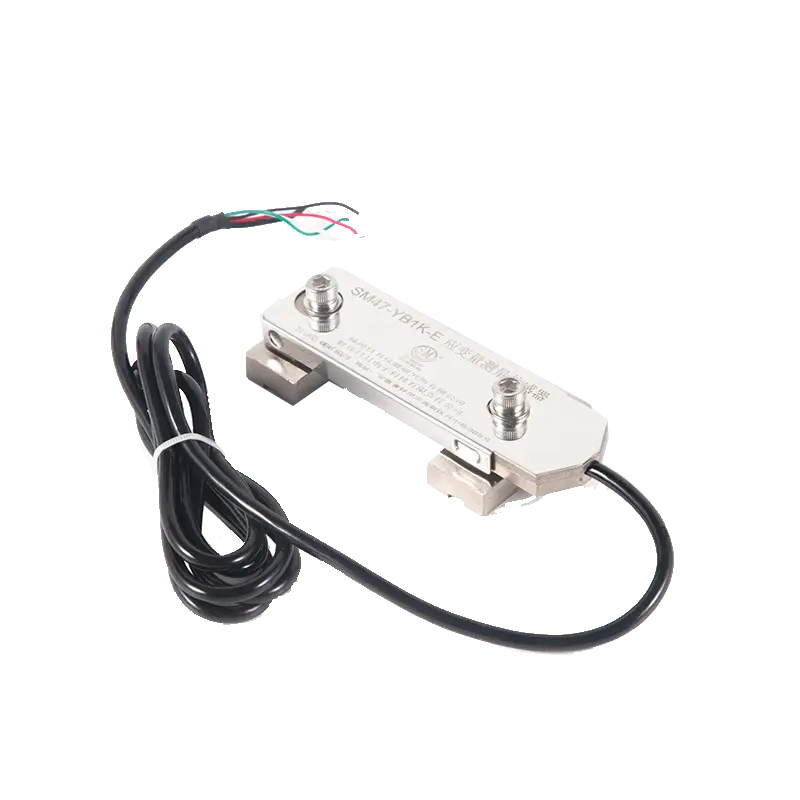How Does a Differential Pressure Transducer Work?
Release time: 2025-09-29
In industrial, scientific, and engineering fields, differential pressure transducers are common devices widely used for measuring gas and liquid flow, monitoring filters, and in various automation control systems. Understanding how differential pressure transducers work not only helps improve our understanding of their usage but also helps us make more informed choices in practical applications.
Basic Definition of Differential Pressure Transducers
A differential pressure transducer (DPT) is an instrument that measures the difference in pressure between two points. Simply put, it monitors the pressure differential to assess fluid flow conditions, seal integrity, liquid level changes, and more. A differential pressure transducer typically consists of a pressure sensor, a conversion circuit, and other processing units, ultimately providing an electrical signal proportional to the pressure difference.
Working Principle of Differential Pressure Transducers
The working principle of a differential pressure transducer is primarily based on measuring the difference in pressure between two points. The process can be broken down into several steps:
Structure of the Pressure Sensor: The differential pressure transducer has two pressure ports: one to measure the high-pressure side (P1) and the other to measure the low-pressure side (P2). The pressure differential between these two ports is converted into an electrical signal. The core components of the sensor are typically piezoelectric elements or strain gauges that detect pressure changes.
Conversion of Pressure Difference: When the pressure differential between the two ports changes, the pressure-sensing element inside the transducer experiences corresponding physical stress. This stress alters the electrical resistance, piezoelectric effect, or strain, resulting in a change in the electrical signal. The magnitude of this electrical signal is directly proportional to the pressure difference.
Signal Processing: The output signal from the sensor is usually weak, so it requires amplification through electronic components such as amplifiers. Ultimately, the signal is converted into a standard current (e.g., 4-20mA) or voltage (e.g., 0-10V) signal, making it suitable for monitoring, alarm systems, or control applications.
Types of Differential Pressure Transducers
Differential pressure transducers come in various types, which can be categorized based on their measurement range, accuracy, and environmental suitability. Some common types include:
Capacitive Differential Pressure Transducers: These operate on the principle of capacitance change and are suitable for high-precision, low-range pressure differential measurements. They are commonly used for flow measurement and gas monitoring.
Piezoresistive Differential Pressure Transducers: Based on the piezoresistive effect, these are widely used in high-temperature and high-pressure environments, suitable for measuring liquid and gas pressure differentials.
Semiconductor Differential Pressure Transducers: These use semiconductor materials to sense pressure changes and generally offer higher output sensitivity, making them suitable for precise measurements.
Diaphragm Differential Pressure Transducers: These operate based on the deflection of a metallic diaphragm to measure pressure differences and are suitable for monitoring large-range pressure differentials, commonly used in industrial process control.
Applications of Differential Pressure Transducers
Differential pressure transducers have a wide range of applications in various industries. Some common applications include:
Flow Measurement: Differential pressure transducers are often used to measure the flow of gas or liquid. By utilizing the relationship between fluid velocity and pressure differential, differential pressure transducers can monitor flow rate changes.
Filter Monitoring: In air or liquid filtration systems, differential pressure transducers can detect the clogging degree of the filter. By monitoring the pressure differential, the system can determine when cleaning or replacing the filter is necessary.
Liquid Level Monitoring: In enclosed containers, differential pressure transducers can measure liquid levels. As the liquid level changes, the pressure differential inside and outside the container will also change. By monitoring this differential, the liquid level can be estimated.
Leak Detection: Differential pressure transducers can also be used to check the sealing integrity of pipes, equipment, or containers. In a sealed system, the pressure differential should be zero or close to zero. If there is a leak, the differential pressure will change, providing timely feedback to the system for repair.
HVAC Systems: In Heating, Ventilation, and Air Conditioning (HVAC) systems, differential pressure transducers are used to monitor the status of air filters, ensuring air quality and system efficiency.
Advantages and Disadvantages of Differential Pressure Transducers
Advantages:
High Accuracy: Differential pressure transducers can achieve highly accurate pressure differential measurements, suitable for applications with stringent requirements.
Versatility: In addition to measuring pressure differentials, differential pressure transducers can be used for a variety of applications, including flow measurement and liquid level monitoring.
Easy Integration: Differential pressure transducers are highly compatible with automated control systems and data acquisition systems, making them easy to integrate into existing equipment.
Disadvantages:
Environmental Sensitivity: External factors such as temperature and humidity changes can affect the accuracy of the transducer.
Maintenance Requirements: Some types of differential pressure transducers require regular calibration and maintenance, especially in high-temperature or high-pressure environments.
Higher Cost: High-precision transducers with special materials tend to be more expensive.
Conclusion
As a widely used pressure measurement device, differential pressure transducers play a critical role in industrial and scientific applications. By measuring the pressure difference between two points, they provide valuable information for monitoring flow, liquid levels, filter status, and more. When selecting a differential pressure transducer, understanding its working principle and the characteristics of different types can help us make better decisions for solving practical problems.
Differential pressure transducers not only enhance automation and intelligence levels but also play a significant role in ensuring production safety and improving efficiency. The future application prospects of this technology are vast and ever-expanding.


 />
/> />
/>